|
Overview:
There are many different types of storage devices for use with modern computers. I'll try to cover a few here.
Most of the information stored on a computer is stored on the hard drive. Hard drives vary in physical size and storage capacity. In general, a hard drive is the largest (capacity) storage device in your computer. It has many times more storage capacity than CD, DVD or electronic memory. A few years ago, a 40gig (gigabyte) hard drive was almost unheard of. Today, it's almost impossible to find a hard drive that has that little capacity. Now, 3 terabyte (3000 gigabytes) are readily available. The common hard drives found in todays computers are called 3 1/2" (three and one-half inch) hard drives. This is the most common size. They fit into the 3 1/2" drive bays in your computer. Laptop computer hard drives are called 2 1/2" hard drives. They are much smaller than the desktop computer drives and typically consume less energy but they are generally slower. A few years ago, at least one company made a 5.25" hard drive but no one (as far as I know) makes 5.25" hard drives for personal computers.
Note:
I want to clarify that a 3 1/2" drive isn't 3.5" wide. It's about 4" wide. The media platters in the drive are 3.5". The 5.25" drive is actually close to 6" wide.
Hard Drives:
In the image below, you can see a standard hard drive. As you can see, I've removed the top cover. Never remove the cover of a working hard drive, unless it's no longer of any use. The drive platters must remain dust/contaminant free for the drive to remain reliable. The 'platters' (round, mirror-like surface) you see are where the information is stored. The arm that you can see on top of the platter is where the read/write heads are mounted. There is one head for each side of each platter. There are 2 platters in this drive. When the disc drive searches for information, the arm will move across the platter (never touching it) and read/write the data. In some drives, the platters spin as fast as 15,000RPMs (revolutions per minute). In this old drive (made in 1996), the platter probably spun at 5400RPMs. Most modern 3.5" drives spin at 7200RPMs.
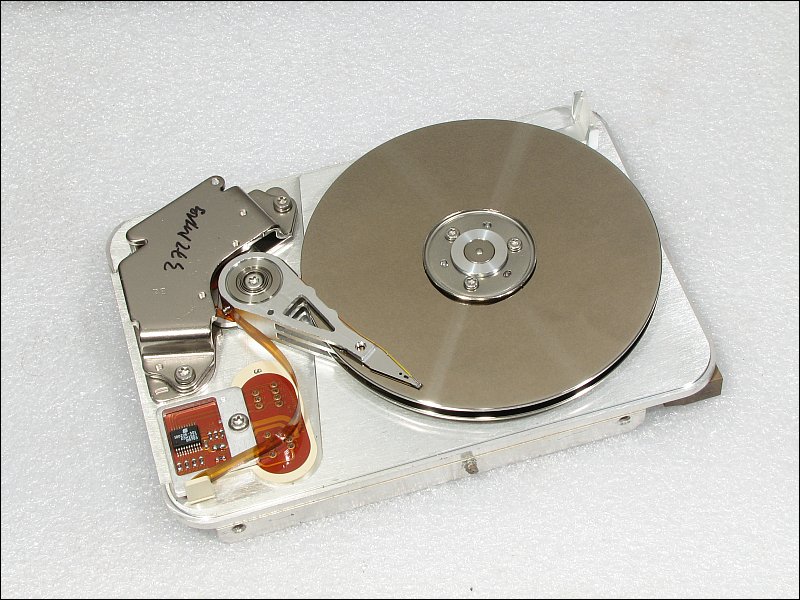
Note: MOST hard drives have 2 heads per platter (one on each side). The previous drive only has 3 heads. The arm that you see in the picture has no read/write head. In a later chapter, I will show you what the actual heads look like.
Below, you can see a 40 pin cable connector. This is an IDE cable. They are were used to connect hard drives to the motherboard. They have largely been replaced by SATA connectors. If you look carefully, you can see that the cable has far more conductors than it does pins. The 80 conductor cables are required for the faster data transfer rates of newer computers. The extra conductors are used for shielding between data lines. If you try to use a 40 pin, 40 conductor cable with fast data transfer rates, the system will often be unstable. The 80 conductor cable allows automatic selection between 'master' and 'slave' drives when the drives have their jumpers set to CS (Cable Select). The 40 conductor cable requires that you set the jumpers on the drives manually.
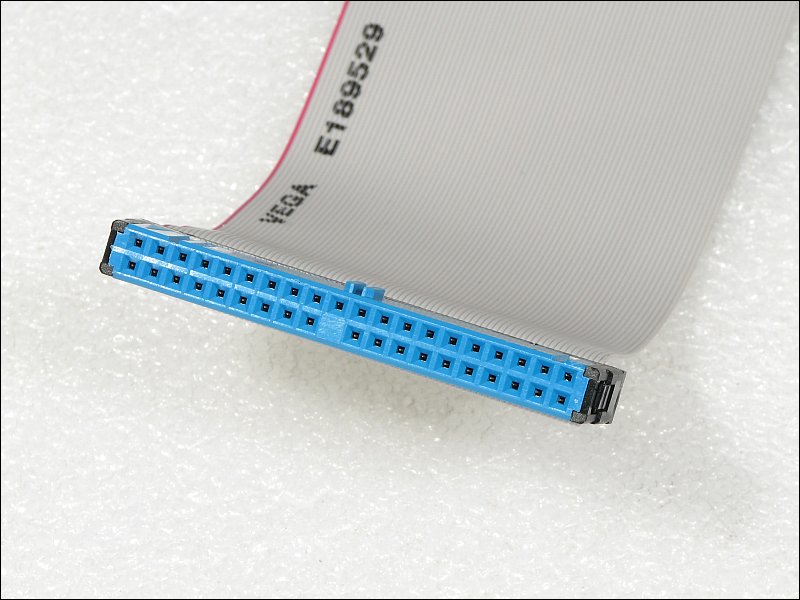
In the picture below, you can see the 40 pin IDE connector. Notice that it has two ways to assure the correct polarity. The first is the missing pin. It works to assure that cables like the one in the center above are properly connected. The other way it assures proper connection of a cable is by having a protrusion on the outside of the connectors (as the cable on the left has). This connector is standard on most optical and IDE drives.
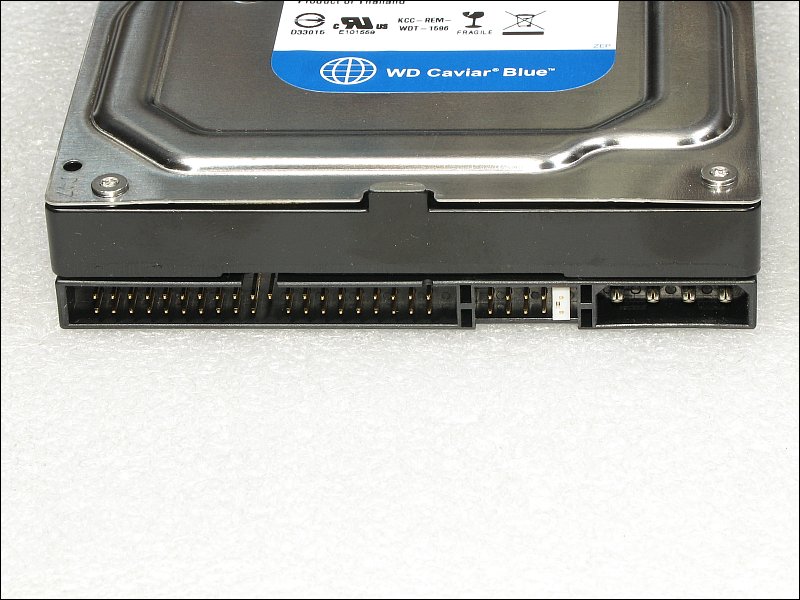
In the image above, the connector all of the way to the right is the 4-pin Molex power connector. It's standard on IDE drives.
CD-ROM Drives
CD-ROM and DVD-ROM drives (both fall into the category of optical drives) are very popular. Virtually every computer in use has a drive that can read CD and most have CD drives that can burn (record onto) CD-R (Recordable) and CD-RW (CD Re-Writable) media. At a bare minimum, new computers will have 'combo' drives. A combo drive can read and write on CDs but they can also read DVDs. This allows the user to watch DVDs on their computer. Most desktop computers now have drives that can read and write to both CDs and DVDs. Blu-Ray drives are becoming less expensive and are options on some of the newer computers.
The following image is a combo drive with the cover removed. There's really not much to see but I thought it would be interesting for those who have never been adventurous enough to take their drive apart.
In the next image, you can see a close-up of the laser 'pickup' mechanism. The coils of wire on the sides, keep the lens (center of pickup) in focus and on track. Since the magnetic coils have limited range, they only fine tune the tracking of the data on the disc. For moving long distances, the pickup is motivated along 2 metallic rods by a worm gear.
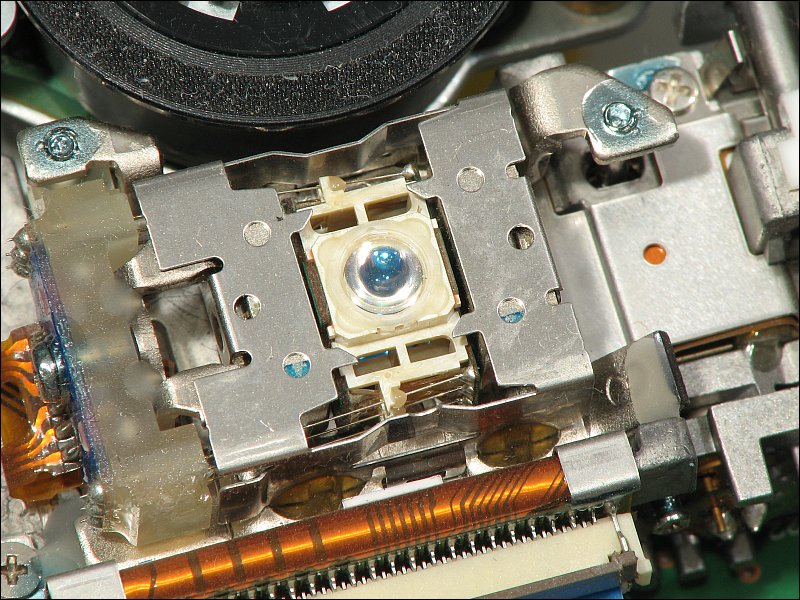
Floppy Drives:
As I mentioned before, there were some large (5.25") 'floppy' drives. These drives used discs that were actually floppy. The smaller format floppy drives use the same basic recordable medium but it's in a hard shell. These discs are approximately 3.5" across. As of late, these drives are becoming rare. Just about the only time I use them is when I have to load some sort of driver when loading an operating system onto a computer using an older operating system. Frankly, I'm happy to see them go. From my experience, they are VERY unreliable. I rarely get more than a few uses from a disc and the data on them gets lost regularly. The image below shows a 3.5" floppy drive without its cover. This is one of the only drives where the disc read/write touches the media. On the back of the drive, there's a motor that drives the head across the disc surface. As you can see, there is a purple disc in this unit. If you look closely, you can see the black recording media. These discs had sliding covers that would be opened as the disc was loaded into the drive.
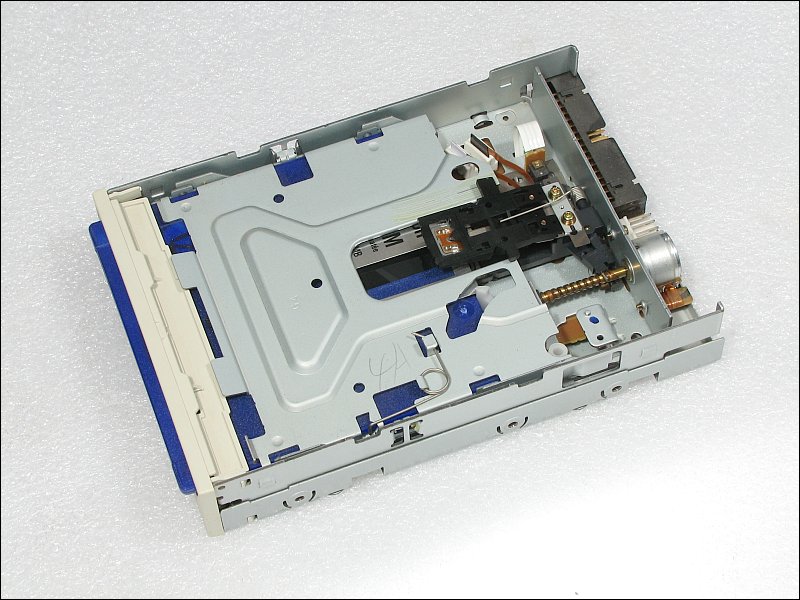
Laptop Drives:
As I mentioned before, the drives for 'laptop' (notebook) computers are smaller. They also spin more slowly (although there are some that spin at 7200RPMs). Spinning more slowly means that it takes less energy to spin the disc. Remember that laptops are often run off of batteries and reducing energy consumption is important. Even new laptops use the slower (5400RPM, sometimes, 4200RPM) drives. For many people, they are simply too slow (they make even a computer with a fast processor sluggish). For those people, faster drives are available. Those who don't mind spending a bit more are using solid state hard drives. They can make a sluggish laptop extremely fast and responsive. Below is an image of a standard (non SSD) laptop drive. The Sharpie is used to show scale.
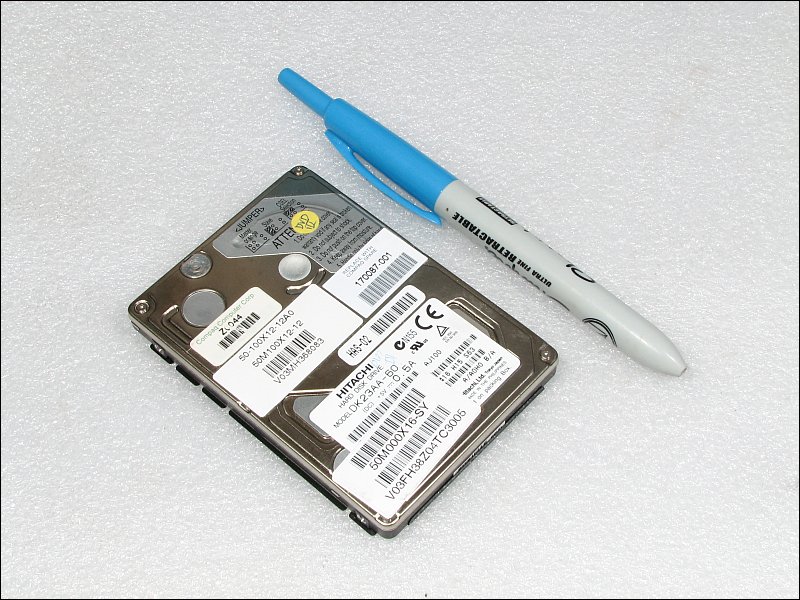
Drive Enclosures:
Many times, it's necessary to transfer large files (video, audio) from one computer to another. To do this, many people use a portable hard drive. Most portable hard drives are simply 3.5" hard drives in a protective case. Typically, the case has a power supply of some sort. For 3.5" drives, the power supply is usually plugged into a wall outlet. For laptop and solid state drives in portable enclosures, the current draw is less so they can get their power from the USB port. Since a USB port is only capable of safely supplying 1/2 amp of current, some enclosures have a splitter that pulls power from 2 USB ports. The image below shows the dual USB plugs. In some instances, you may find that the drive malfunctions when used in the front USB ports. Many times, plugging the cables into USB ports that are directly connected to the motherboard (on the rear I/O panel) will allow the drive to work properly.
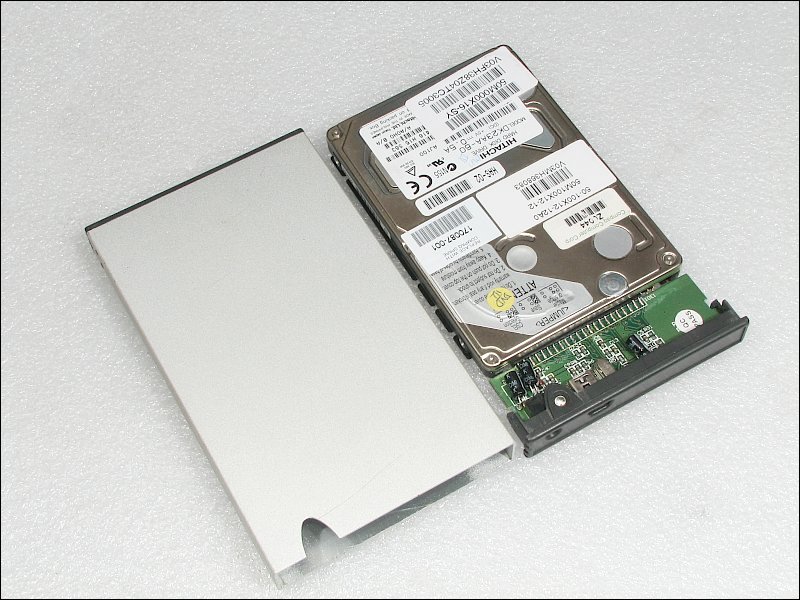
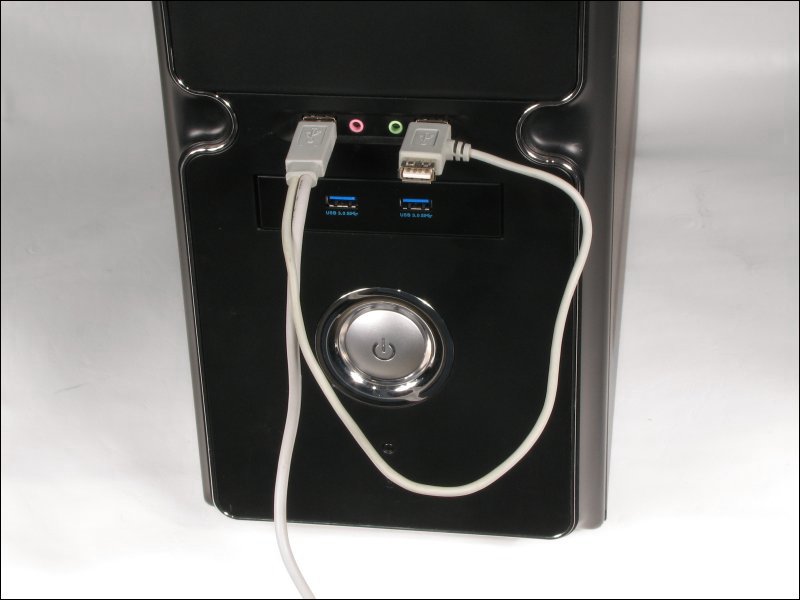
Below, you can see the connector for the drive enclosure. It's a miniature IDE connector but it also contains connections for power and ground.
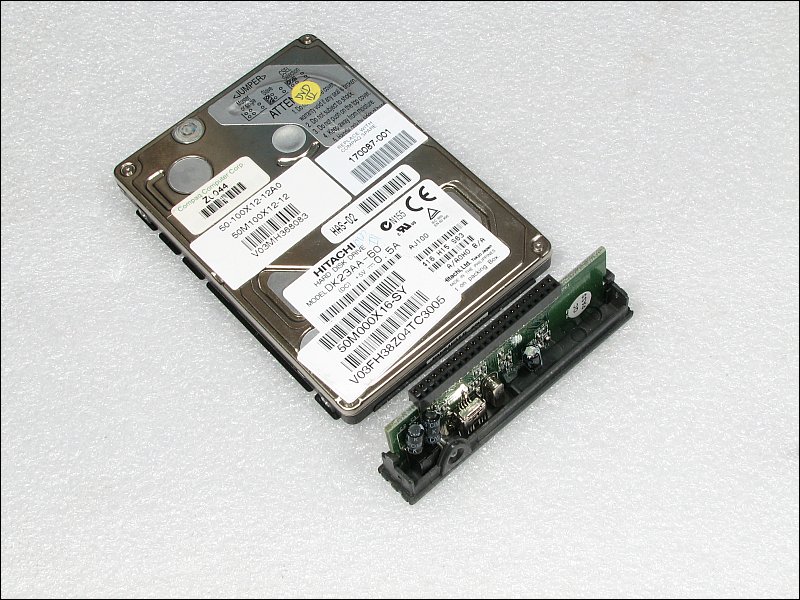
The image below shows a miniature IDE to standard IDE adapter. With this, you can connect a 2.5" laptop drive to a standard IDE cable. This is useful when you need to get data from the drive or when you have to rid a drive of malware and using it in the computer that's it's normally in won't allow (or makes it very difficult to disinfect it.
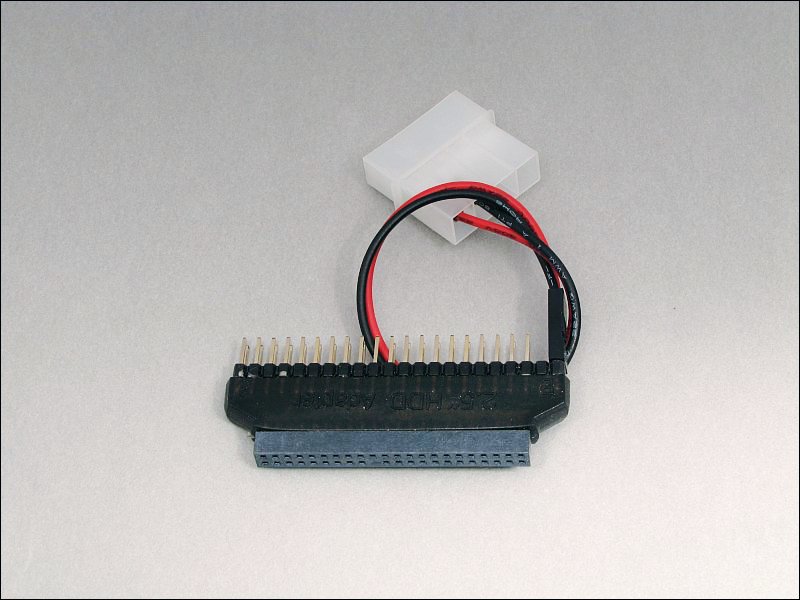
USB Flash Drives:
For those who need to transfer small to medium sized files, a USB flash drive (also known as 'pen' drives or 'jump' drives) may be exactly what you want. At this time (end of 2011), they are available with capacity as high as 256 gigabytes. The higher capacity drives are not necessarily physically larger they can simply hold more data. Flash drives from various manufacturers will look considerably different but serve the same purpose. The two below are both 4 gigabyte drives. They all plug into the USB ports and are recognized by the computer as a new hard drive. For Windows XP and later versions of Windows, 'drivers' are not needed. For older operating systems like Windows 98, you have to load drivers for the computer to recognize the drive.
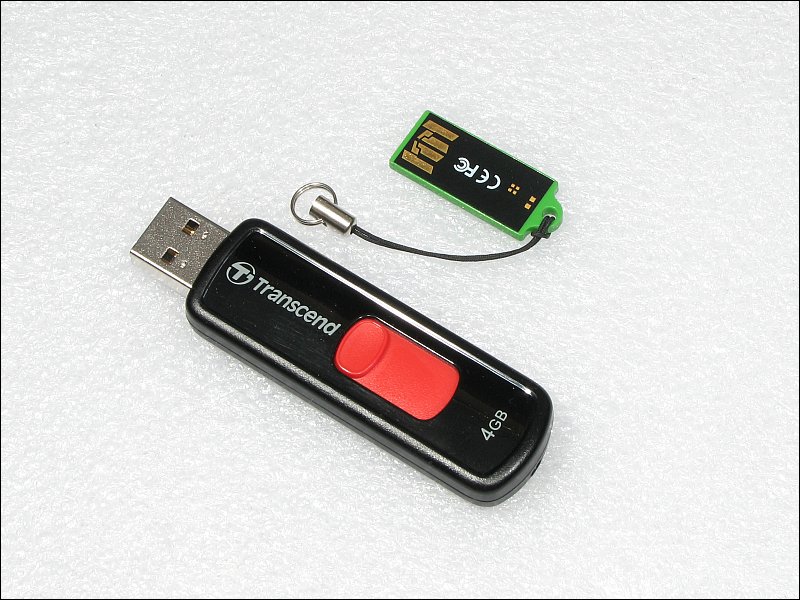
Note:
Drivers are files that contain the information that the computer needs to use a device. For newer operating systems, like XP, Vista, Win7, the drivers are loaded automatically (most of the time). For older operating systems, you have to manually load the files. For most devices, the drivers are provided on a CD-ROM. If you have a device that needs drivers but you lost the disc, the drivers can usually be downloaded from the manufacturer's web site.
The following two images show a USB drive without the housing. The large IC on each side of the board is where everything is stored. The smaller IC is the controller.


USB Hubs:
If you need more USB ports than your system provides or you need to make up for a broken USB connector, you can buy a USB hub. If you need more USB ports on the back of the computer, you can use a USB hub or a card to go into one of the expansion slots on the motherboard.
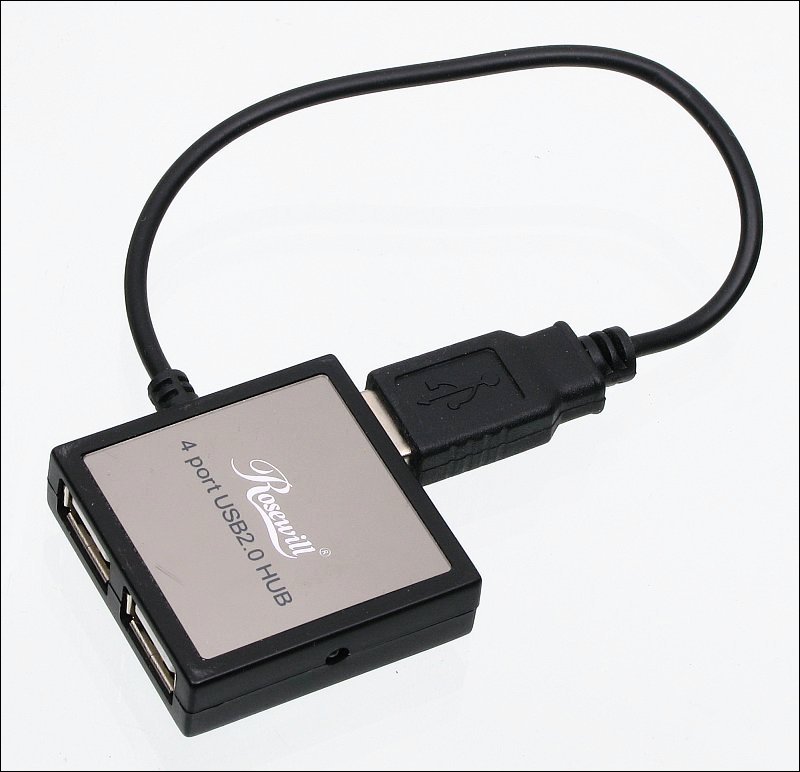
USB 3.0:
You've likely heard the terms USB 2.0 and 3.0. USB 3.0 is the newer format and can transfer data at a higher rate. USB 2.0 (and all previous USB formats) uses a 4 conductor connector (two for power and two for data). The USB 3.0 has 5 additional contacts in the connector. The image below shows a disassembled USB 3.0 connector. The 4 large, straight contacts are to provide backward compatibility with older systems. The 5 smaller contacts are for the USB 3.0 format. There are two data receive lines (+ and -) and two transmit lines (+ and -). The center contact is a ground.
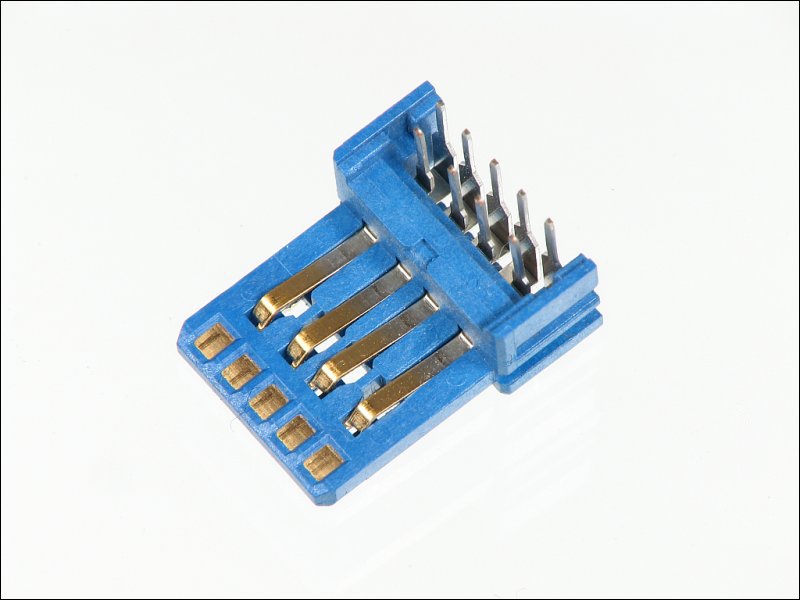
Note:
The connector above is the one that would be on the circuit board in your computer. The contacts are reversed (front to back) from the ones on a USB 3.0 device like a USB flash drive.
Above it was stated that very large flash drives are available. This, however, doesn't mean that they're practical. Flash drives tend to be relatively slow so large files (especially folders with a lot of smaller files) tend to take a very long time to transfer to the drive. The new USB 3.0 drives are faster but still relatively slow. If you want to move large files, you may want to use a portable drive to move large files, a hard drive (either a conventional 2.5" drive or a solid state hard drive may be a better option. If you have a docking station for hard drives at both locations (where you loaded the files and where you need to move them to another computer), using a small hard drive is very easy. You simply plug the drive into the docking station and use it as you would the flash drive. In the image below, you can see that this docking station will accept full size (3.5") hard drives as well as the smaller (2.5" laptop/SSD) hard drives.
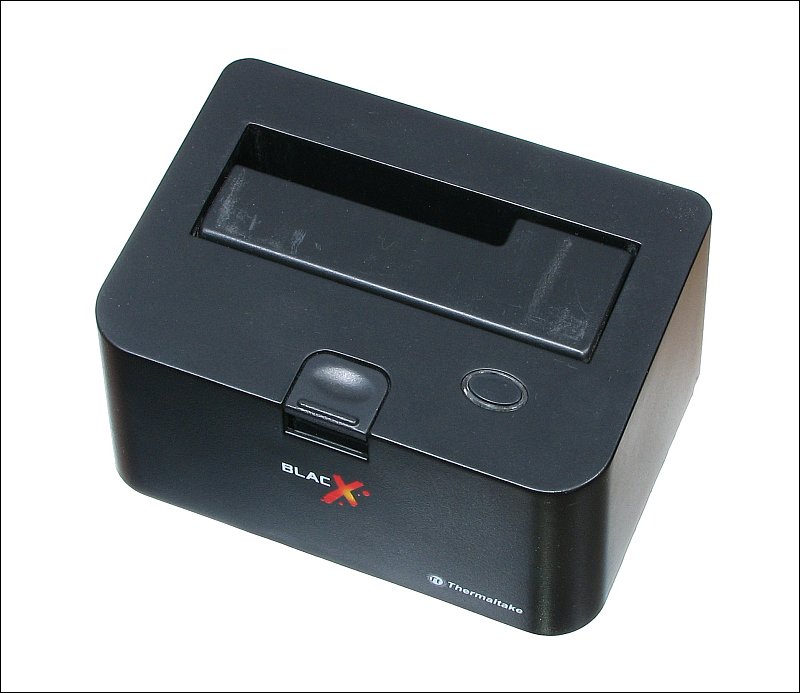
On the rear of this docking station, you can see that it has both USB and eSATA connections. The eSATA is faster but not currently as common.
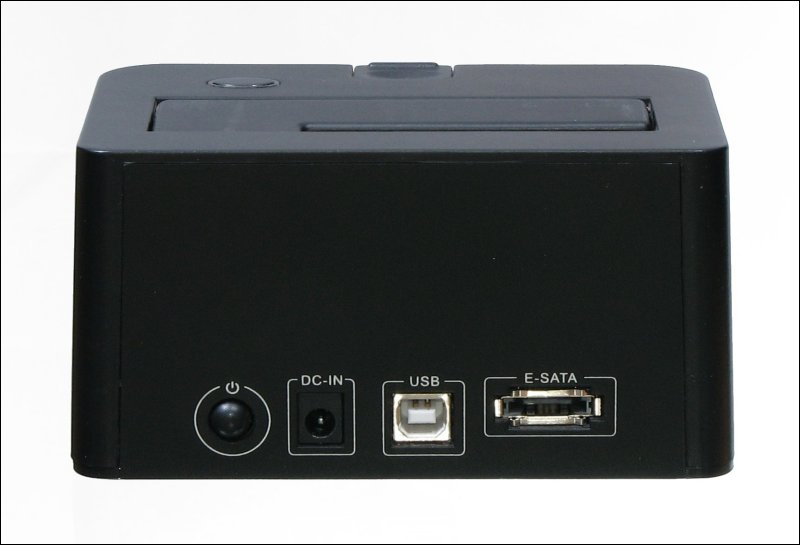
Card Readers:
Card Readers are devices designed to read multiple types (generally) of flash memory cards. The one below is common reader. This reader also has USB and eSATA connections. Many times, the front-panel USB connectors on a computer will get broken or will wear out. Since it's nearly impossible to find replacement parts for a computer case, this is one way to restore the front-panel USB access on your computer.

Below are some of the cards it can read. The two on the left are essentially the same. They are both SD cards which are probably the most common of all of the various types of flash memory cards. The top one is a micro SD card in an adapter. The micro SD cards are sometimes used in cell phones to provide additional storage. Installing the micro SD card in an adapter allows them to be used in anything that uses an SD card. The large card on the right is a Compact Flash card. It's used in many of the high-end DSLR cameras. The XD card was only used by a few manufacturers.
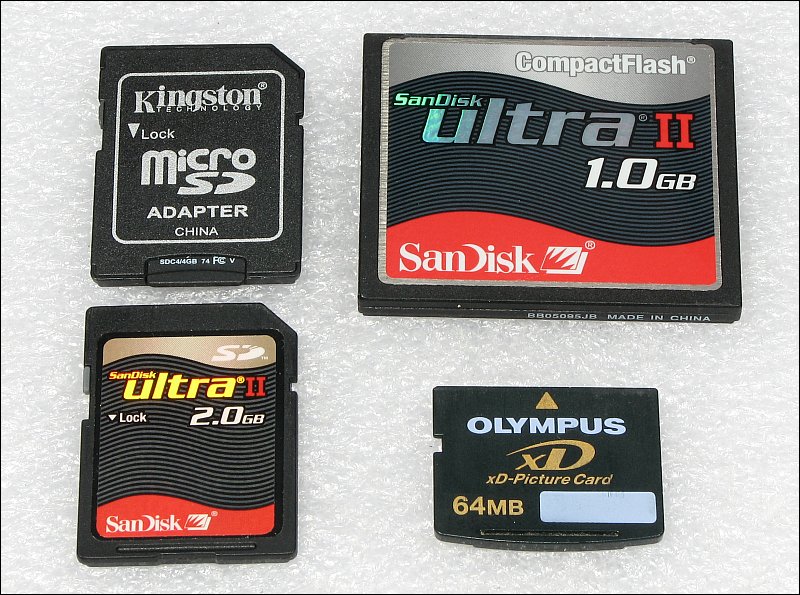
|
You May Be Interested in My Other Sites
-
This site was started for pages/information that didn't fit well on my other sites. It includes topics from backing up computer files to small engine repair to 3D graphics software to basic information on diabetes.
-
This site introduces you to macro photography. Macro photography is nothing more than the photography of small objects. It can take quite a while to understand the limitations associated with this type of photography. Without help, people will struggle to get good images. Understanding what's possible and what's not possible makes the task much easier. If you need to photograph relatively small objects (6" in height/width down to a few thousandths of an inch), this site will help.
-
If you're interested in air rifles, this site will introduce you to the types of rifles available and many of the things you'll need to know to shoot accurately. It also touches on field target competition. There are links to some of the better sites and forums as well as a collection of interactive demos.
-
This site is for those who want to install or update their car stereo. It begins with the most basic electronics theory, progresses into basic transistor theory as well as covering virtually everything associated with car audio.
|
|


















